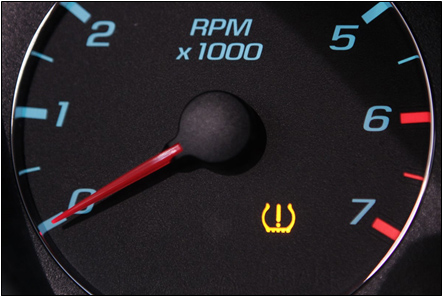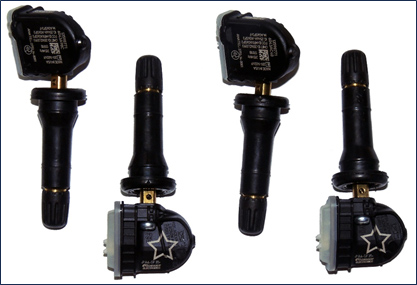
Nobody likes to see the “Uh-oh kitty face”. If you live in the Midwest and have a vehicle with TPMS, then you are likely to have experience with these systems. Generally, tire pressures change by 1 PSI for every 10°F in ambient temperature change. When we get hit with temperature swing day of 40-50°F, your tire pressures can vary as much as 5 PSI with the vehicle at rest. Then, as you drive the vehicle, the tires heat up and it can magnify the difference. Generally, a drop of 25% in tire pressure will illuminate the TPMS light. Running over a nail or screw, corroded aluminum wheels, and tire blow outs also affect your tire pressures. All can lead to your TPMS light illuminating.

TPMS systems are common on most passenger cars and light trucks. They have been government mandated for all US light duty vehicles produced after September 1, 2007. Some vehicles have been using a version of TPMS since the early 1990s. This mainly developed from the use of run-flat and radial tires. Both can be hard to visually inspect for low tire pressures. The only accurate way to tell is by manually checking the pressure with a tire pressure gauge.
How do they work?
There are two distinct types of TPMS systems. Direct and indirect systems. Direct systems use sensors to measure the individual tire pressures directly. Whereas, indirect systems estimate tire pressures from the input of external sensors.
Indirect System
Does not have a pressure sensor inside the tire.
Uses wheel speed sensors to estimate tire pressure. A correctly pressurized tire should produce a set number of revolutions per mile. While an underinflated tire will have more revolutions per mile due to the decreased overall diameter of tire.
Less complex and more cost effective.
Less accurate than direct systems.
Usually, it is easier to reset these systems after tire repair/replacement.

Direct System
There is a tire pressure sensor located in each wheel/tire assembly.
More accurate than indirect systems.
Can display real time pressure and location data to the driver.
Requires battery powered sensors in the wheels with a radio signal receiver in the vehicle.
More complex and more expensive than indirect systems.
Tire mounted pressure sensors require periodic replacement due to battery and/or sensor failure. The lifespan of the batteries is about 6-8 years.
The tire locations need to be reset when tire locations are moved around.
Tire pressure monitor systems have come a long way since their inception. Knowing your tire is low before it goes flat is a great improvement in driver safety. It can also save replacing a costly tire. The flip side is that ambient temperature fluctuations can cause the light to illuminate without there being an actual leak in the tire. TPMS systems can be a nuisance at times but overall properly inflated tires are safer and can save you time and money.
Aaron B.